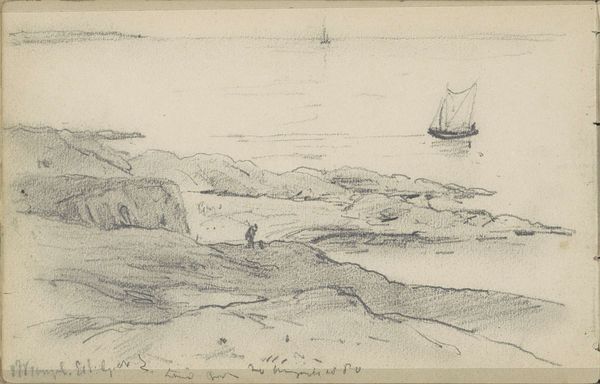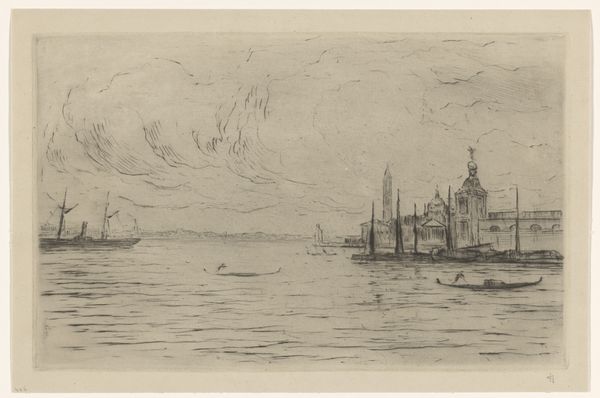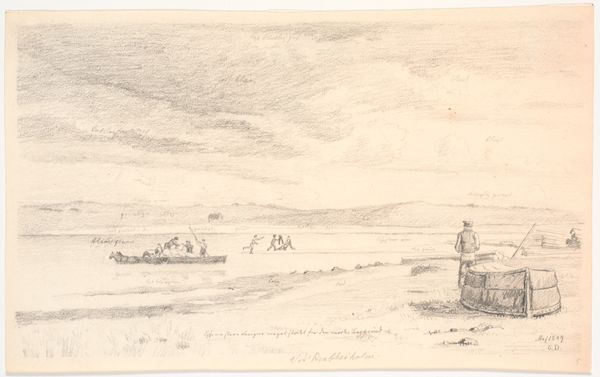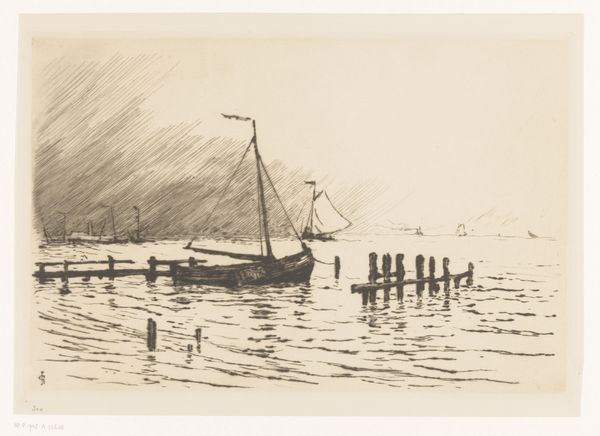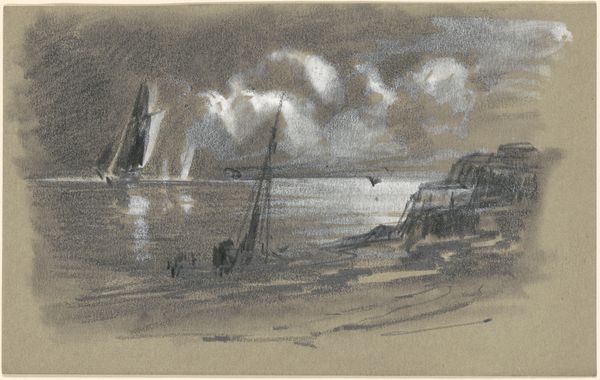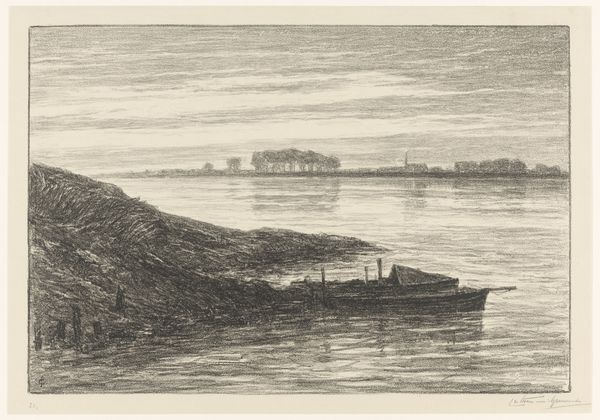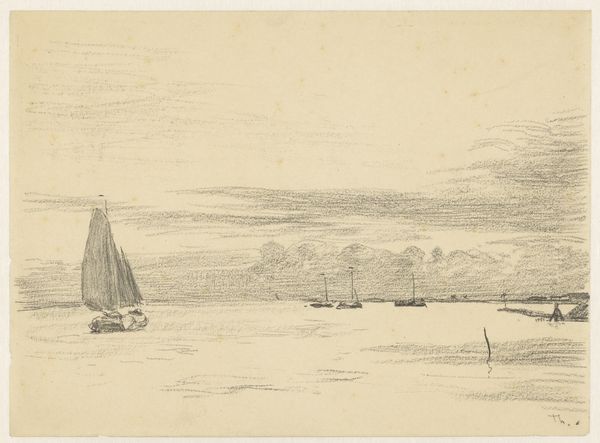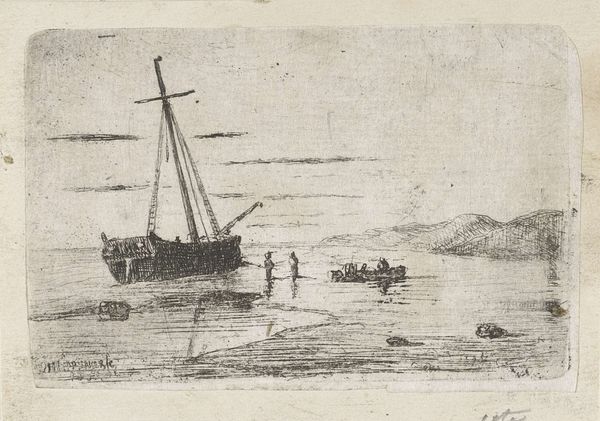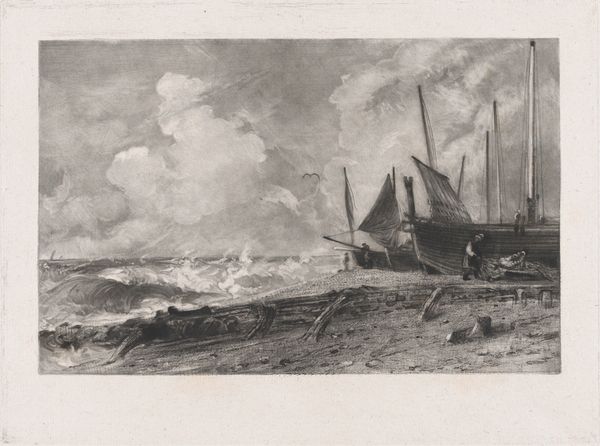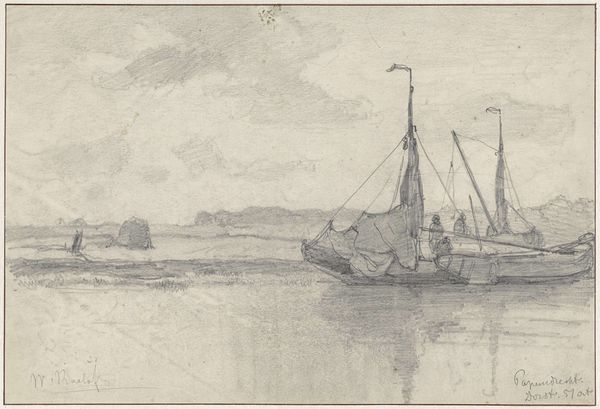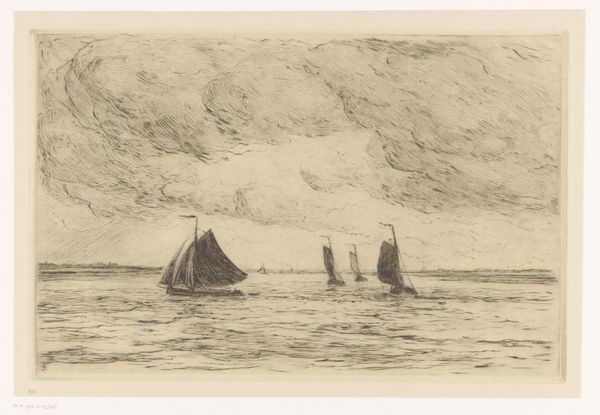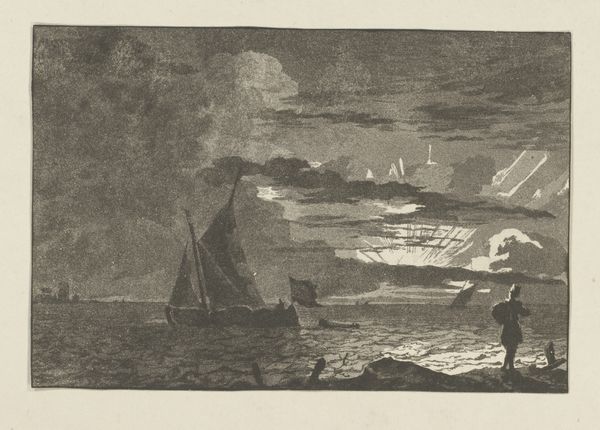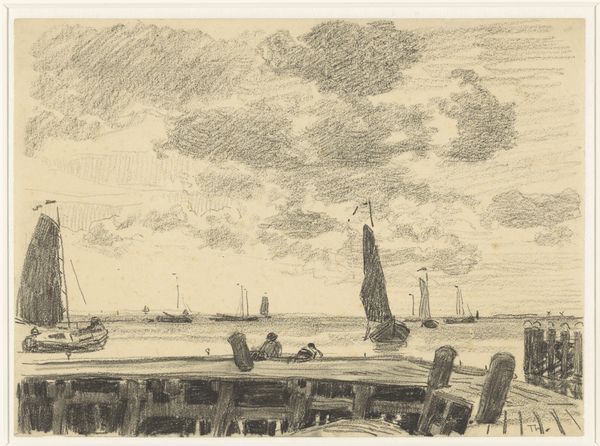
Dimensions: 202 mm (height) x 253 mm (width) (bladmaal)
Curator: We're looking at Poul S. Christiansen's "Molen ved Dyrnæs. Gråvejr" from 1915, a pen drawing held here at the SMK. What's your first impression? Editor: Stark. Bleak, even. It feels like a memory fading, with that gray sky pressing down on the figures. The rough pen work amplifies that sense of a harsh landscape. Curator: Indeed. Consider the way Christiansen deploys the pen – the sheer volume of hatching suggests labor, almost like an obsessive carving. It emphasizes the artist’s hand in its creation, a tangible engagement with the scene before him. Editor: I see what you mean, but I’m also thinking about who this artist was drawing for. Was this intended for a gallery, or a more personal space? Was there a market for landscape drawings depicting what appears to be the backwater in 1915? It seems intentionally devoid of romanticism, more of a direct document. Curator: Perhaps. But what’s fascinating is the way the artist handles traditional subject matter. It uses a rudimentary instrument – pen on paper – yet achieves an impressionistic feel in capturing light and mood. The pen, as a tool, transforms the landscape, imbuing it with social significance through the sheer act of its depiction. Editor: And I’m curious about how we, as a national museum, display an image like this. It gives off a realist feeling because it doesn't use traditional art mediums. The location is represented showing people using local harbors. This speaks to a sense of national identity being forged around working with elements, not grand historical narratives. Curator: It serves, then, as an artifact documenting not just the environment, but also a shift in artistic expression—the democratizing influence of materials easily obtained shaping high art practices. Editor: Exactly. It really makes you think about how national art institutions curate items based on both material and subject matter, but especially if the two tie together to weave an important historical representation. Curator: It encourages reflection on how social contexts transform common landscapes. A sketch of place that is transformed by process. Editor: Definitely something to consider the next time you view the national collection.
Comments
No comments
Be the first to comment and join the conversation on the ultimate creative platform.
